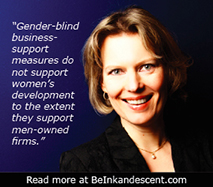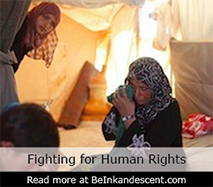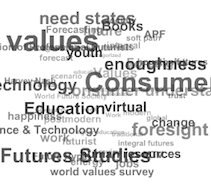
By Robin Strongin, creator
Disruptive Women in Health Care
“As study after study has taught us, there is no tool for development more effective than the empowerment of women. No other policy is as likely to raise economic productivity or to reduce child and maternal mortality. No other policy is as sure to improve nutrition and promote health, including the prevention of HIV/AIDS. No other policy is as powerful in increasing the chances of education for the next generation. That is why discrimination against women of all ages deprives the world’s children—all of them, not just the half who are girls—of the chance to reach their potential.” — Kofi A. Annan, Former Secretary-General of the United Nations

Making Health Care a Top Priority
The need to improve health care in the developing world must be a high priority on the global policy agenda. And indeed, for many Disruptive Women, it is.
Microfinance guru and Nobel Peace Prize winner Muhammad Yunus’ pioneering work has taught us that microcredit, “the innovative banking program that provides poor people — mainly women — with small loans they use to launch businesses and lift their families out of poverty” along with social business, “a business that is cause driven rather than profit driven with the potential to act as change agent for the world” can help create a World Without Poverty. [Read more in his bestselling book, “Creating a World Without Poverty: Social Business and the Future of Capitalism.“http://www.amazon.com/Creating-World-Without-Poverty-Capitalism/dp/1586484931]
Many Disruptive Women are economists, artists, social business CEOs, innovators and health care experts and all Disruptive Women want to see improved health care access and delivery—in the U.S. as well as in developing countries.
Economic empowerment alone is not enough. Education is critical. And there are enormous infrastructure, workforce, and communication challenges to overcome. At the same time, progress is being made, solutions exist and goals are being met.
The following post by Karen Nielsen, President of Nielsen & Associates, LLC, is part of the Disruptive Women in Health Care blog’s “The Value of Health: Creating Economic Security in the Developing World” series.

Women’s Empowerment: a Call to Action
A young girl in Africa awakens early to fetch water for her families’ daily needs. She will need to make multiple trips, carrying the largest volume possible to shorten the task. This daily ritual can take 3 hours or more. For these young girls there will be no school; basic necessities of life are their first priority.
They will marry young, have children and the cycle of limited education and opportunity will begin all over again for the next generation. Education can help break this cycle. However, to change the health and economic status of women, empowerment is the key to success.
In February of 2006, the World Health Organization (WHO) released a report entitled, “What is the evidence on effectiveness of empowerment to improve health?”. The report stated that improved education for women, including adult literacy and empowerment, improves child health and reduces fertility.
Microenterprises were identified as a faster route to improving health. However, the report warned that “it is not enough to increase women’s percentage of household income; this must be accompanied by increasing women’s autonomy, mobility, decision-making authority and power within the household.” Many argue that one leads to the other: increasing a woman’s percentage of household income leads to the increased autonomy but it is not guaranteed.
Providing only micro financing without a contextual understanding of societal restrictions will not ensure women’s empowerment. Effective solutions must be created and offered in an integrated and sustainable manner.
The United Nations (UN) Millennium Development Goals (MDGs) are attempting to create an integrated, sustainable approach to reducing poverty by 2015. If you look at the eight categories, you see the impact they have on women and children:
1. reduce poverty and hunger
2. provide universal education
3. improve gender equality
4. improve maternal health
5. improve children’s health
6. combat HIV/AIDS
7. ensure environmental sustainability
8. create global partnerships.
Moving forward
The MDGs are a framework, agreed to by all the world’s countries and all the world’s leading development institutions, with a goal to unify efforts to improve the lives of the world’s poorest. You will note that the eight goals are larger themes with many subcategories. For instance, under goal number 7, environmental sustainability, Target 3 is to “halve, by 2015, the proportion of the population without sustainable access to safe drinking water and basic sanitation.”
A WHO report on the Self Employed Women’s Association (SEWA) in India has shown that a regular supply of drinking water, adequate housing and proper sanitation not only makes a substantial difference in health status, but also in income generation. Women shoulder the largest burden of water collection, reducing the amount of time that can be used for income generation.
The UN estimates that in sub-Saharan Africa alone, 40 billion hours each year are spent collecting water, equal to a year’s labor for the entire workforce of France. The same report reinforces that lack of sanitation negatively impacts women beginning at a young age. In areas where no latrine is available for students, adolescent girls quit school instead of facing the humiliation of relieving themselves in front of others. The system as a whole must be considered when addressing the needs of women and girls.
Although the MDGs are in place, we have a long way to go. The 2009 WHO report, “Women and health: today’s evidence tomorrow’s agenda”, states that there is an “urgent need for more coherent political and institutional leadership, visibility and resources for women’s health” if progress is to be accomplished in saving the lives and improving the health of women and girls.
The report highlights some important facts
1. Gender-based inequalities in education, income and employment limit the ability of women and girls to protect their health.
2. Complications of pregnancy and childbirth are the leading cause of death in young women aged between 15 and 19 years old in developing countries. Globally, the leading cause of death among women of reproductive age is HIV/AIDS.
3. Suicide is among the leading causes of death for women between the ages of 20 and 59 years globally. While the causes of mental ill-health may vary from one individual to another, women’s low status in society, their burden of work and the violence they experience are all contributing factors.
These are just a few data points from a robust report. The WHO made it clear that societies are still failing women and too many women and girls are still unable to reach their full potential because of persistent health, social and gender inequalities. World leaders must address these issues and pressure must also come from all levels of society for this change to occur. And when possible, individuals must organize at a grassroots level to force change within their own communities.
Read the rest of Karen’s article here.

If you like this article — download a free copy of our e-book
Read what all of our Disruptive Women are thinking about the future of health care around the world in our e-book: “Value of Health: Creating Economic Security in the Developing World.” To download your copy, simply click here: www.disruptivewomen.net.
About Robin Strongin
Robin Strongin is an accomplished public affairs expert with more than 25 years of experience working in Washington, DC. Her areas of specialization include health care, science, technology and innovation. Robin has worked with and for Federal and state governments, regulatory agencies, Congress, think tanks, nonprofit organizations, corporations, coalitions and trade associations.
Strongin founded Disruptive Women in Health Care in 2008 to serve as a platform for provocative ideas, thoughts, and solutions in the health sphere. “The founding Disruptive Women have audacious hopes for our blog,” Strongin says. “We’re not managing change, we’re not waiting for cures. We’re driving change, we’re creating chaos, and we’re finding cures. In a nutshell: We’re disrupting the status quo in the health machine. “Our goal is to become the go-to health care blog — one that is recognized as a Petri dish for fresh ideas and bold solutions. Won’t you join us?”
Contact Robin by email: rstrongin@amplifypublicaffairs.net.




































































































